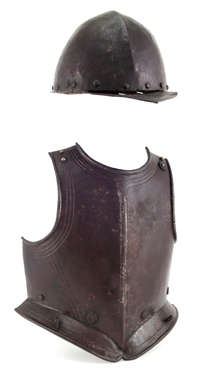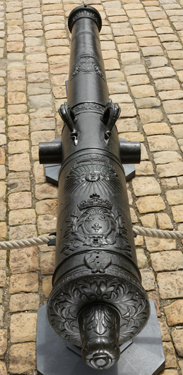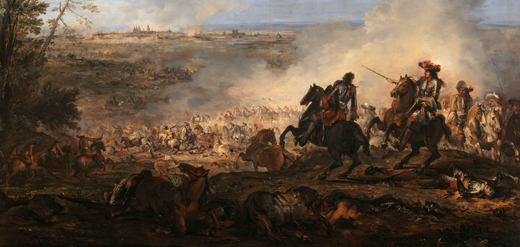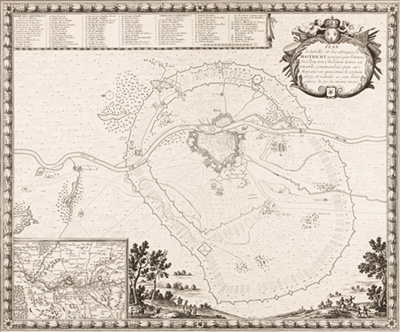FR / EN
visitor's itinerary
The siege of Maastricht
Following a commercial dispute, Louis XIV went to war against Holland (1672-1678), which enabled him to maintain his glory at the expense of the Protestant republic. However, it resulted in Europe uniting against him and marked the start of a series of alliances against France. In this context, the Siege of Maastricht (1673) took on particular importance since it revealed to his enemies the strength of an army which, in 13 days, subjugated one of the most powerful fortified towns in Europe. Perhaps Dumas hesitated to kill off his hero since he did not give any great importance to this episode in his novel. Nevertheless, in The Vicomte of Bragelonne, he conveys the rise in the court nobility to the detriment of the fighting nobility, d’Artagnan dying during this siege, even though Aramis, who became a master plotter, survived his former companions.
-
Breastplate and pot helmet of a pioneer
1/6 
Breastplate and pot helmet of a pioneer.
Second half of the seventeenth century.
Paris, musée de l’Armée Inv. GPO 631 ; H 296 -
The 12-pounder gun Le Solide
2/6 
Le Solide, 12-pounder gun bearing the Royal Arms of France.
Douai, Jean-Jacques Keller, bronze, 1688.
Paris, musée de l’Armée. Inv. 2013.0.63 ; N 105 -
Artefacts found on the camp of
Fort San Sebastian3/6 
Artefacts found on the archaeological site of the camp of Fort San Sebastian, c. 1669- 1670.
The Archaeological Team of the INRAP discovered these artefacts on the site of Camp Achéres, during the summer of 2012.
With the support of SIAAP, Paris, Service régional d’archéologie d’île de France -
Louis XIV directing siege works
at Maastricht4/6 
Joseph Parrocel (1646-1704) Louis XIV directing siege works at Maastricht.
Oil on canvas, last quarter of the seventeenth century.
Versailles, musée national des châteaux de Versailles et Trianon. Inv. MV 6932This art work prefigures the murals also dedicated to the Franco-Dutch War, painted a few years later by Joseph Parrocel in the Northwest refectory of the Hôtel des Invalides. -
A 48 - pounder gun on its carriage.
5/6 
Wolf Hieronÿmus Heroldt (1627-1693).
Reduced model of a 48-pounder gun on its carriage.
Scale: 1:6. Nuremberg, bronze, iron and wood, 1663.
Paris, musée de l’Armée. Inv. 2013.0.512 ; O 33/1 -
Map of the Siege of Maastricht
6/6 
D.R. (Engraver). Map of the Siege of Maastricht.
France, last quarter of the seventeenth century (proof dating from the twentieth century).
Paris, musée de l’Armée. Inv. 996.393




